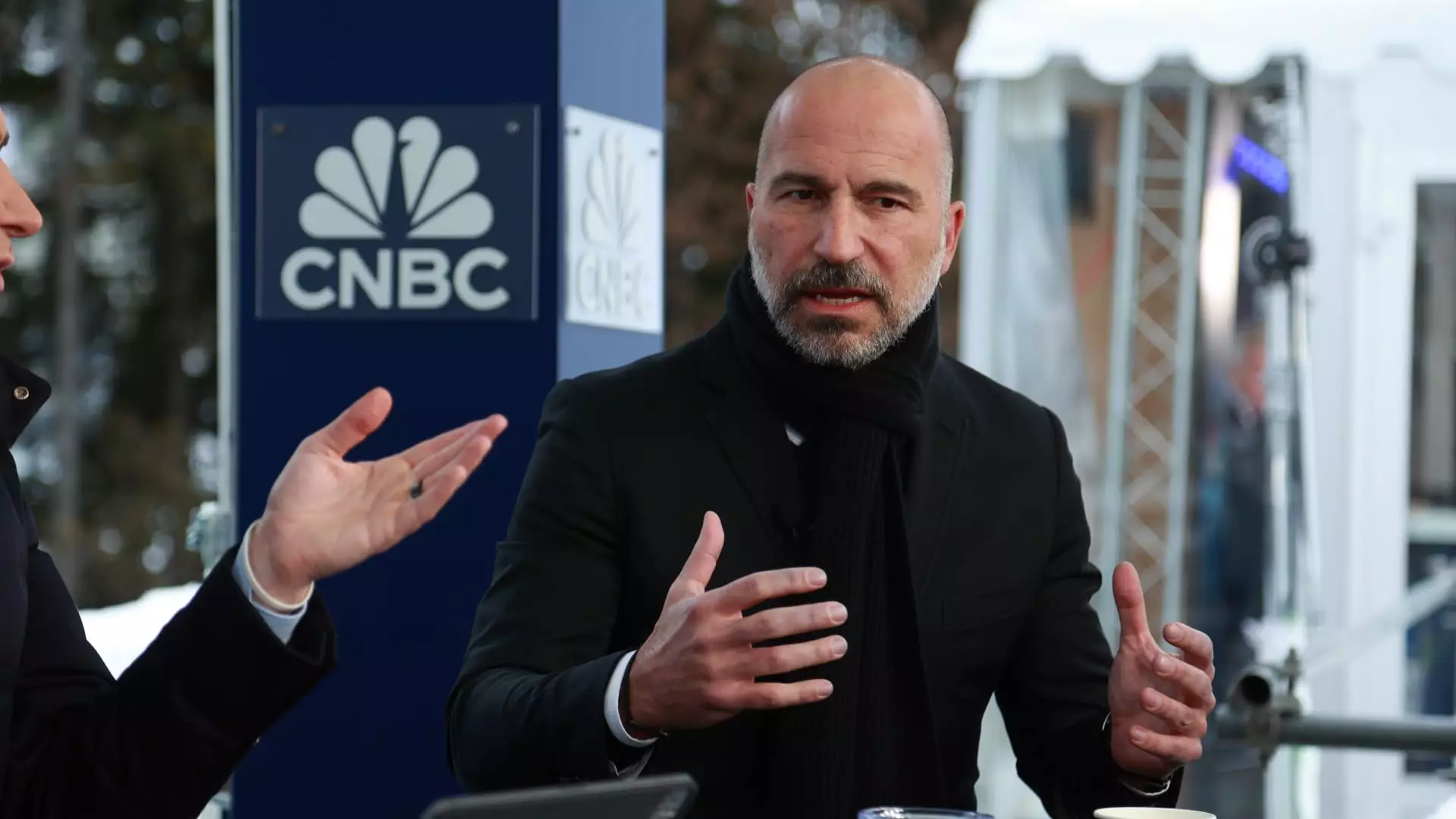Uber recently released its second-quarter earnings report, surpassing Wall Street’s expectations. The company’s stock saw a 4% increase in premarket trading following the positive results. Let’s delve into the specifics of how Uber performed in the period ending June 30 compared to analyst projections.
Uber reported earnings per share of 47 cents, exceeding the 31 cents expected by analysts. Additionally, the company recorded revenue of $10.7 billion, slightly higher than the anticipated $10.57 billion. This represented a significant 16% increase in revenue from the previous year’s $9.23 billion. The mobility unit of the company experienced a 23% surge in gross bookings, reaching $20.6 billion. Delivery gross bookings also rose by 16% to $18.1 billion, while the freight unit remained steady at $1.27 billion.
CEO Dara Khosrowshahi had predicted a 20% growth rate for the second quarter, attributing it to the expanding core mobility business and a rise in food and trip orders from membership subscribers. Looking ahead to the third quarter, Uber anticipates bookings between $40.25 billion and $41.75 billion. Notably, the $41 billion midpoint fell slightly below the average estimate of $41.18 billion. The company also expects adjusted earnings to range from $1.58 billion to $1.68 billion, with the $1.62 billion average estimate falling within the middle range.
Uber’s “monthly active platform consumers” reached 156 million in the second quarter, with 2.77 billion trips facilitated through the Uber platform. These figures demonstrate a substantial increase compared to the same period in the previous year, indicating the company’s growing user base and engagement. Additionally, Uber reported a net income of $1.02 billion for the quarter, with a $333 million pretax benefit attributed to the revaluation of equity investments.
In recent months, Uber has announced several strategic partnerships to enhance its service offerings and sustainability initiatives. A collaboration with Instacart introduced a “restaurants” tab on the grocery delivery app, enabling users to order from restaurants with deliveries fulfilled by Uber Eats. Furthermore, a partnership with Chinese electric vehicle manufacturer BYD aims to bring 100,000 electric vehicles to Uber drivers in Europe and Latin America. The companies have also outlined plans for deploying BYD autonomous-capable vehicles on the Uber platform.
Despite these positive developments, Uber shares were down 5% year-to-date as of the previous trading day, closing at $58.48. Analysts anticipate insights on the future role of autonomous vehicles and robotaxi services in Uber’s business during the earnings call. Additionally, discussions around the potential impact of changing consumer spending patterns on Uber’s overall bookings are expected. Amidst these considerations, Uber continues to incentivize drivers to utilize electric vehicles, such as those from Tesla, as part of its commitment to sustainability and innovation.
Uber’s second-quarter earnings report reflects a resilient financial performance and strategic growth initiatives. While the company has exceeded market expectations in key metrics, challenges lie ahead in navigating evolving consumer preferences and advancing technology integration. As Uber continues to adapt and innovate in the competitive ridesharing and delivery landscape, investors and stakeholders eagerly await updates on its strategic roadmap and operational milestones.


Leave a Reply